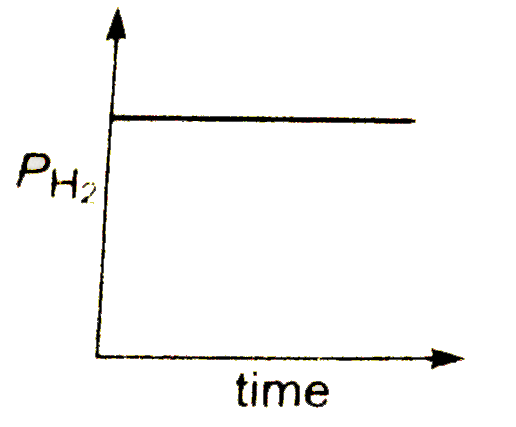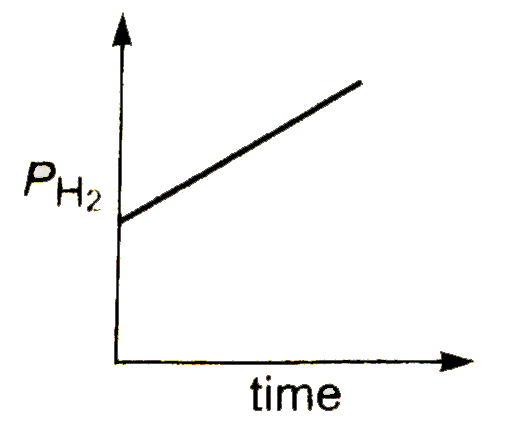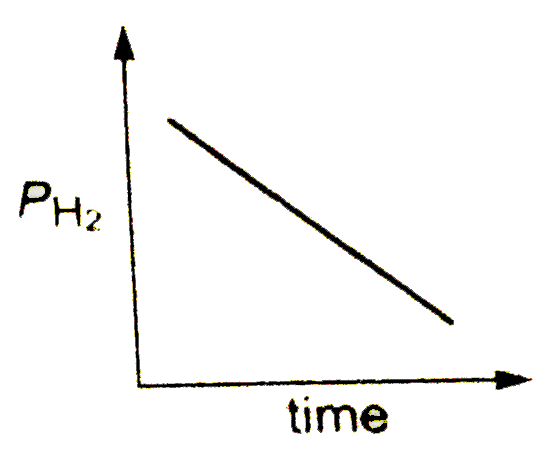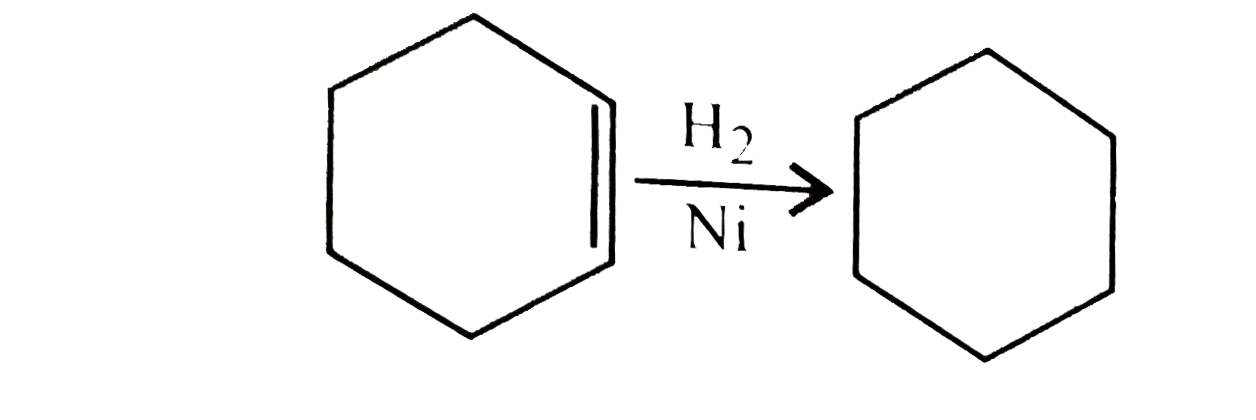Decomposition of Hl(g) on Gold surface is zero order reaction. Initially, few moles of H2 are present in container then which of the following graph is correct ?




The correct Answer is:B
To determine the correct graph for the decomposition of HI (g) on a gold surface, which is a zero-order reaction, we need to analyze the characteristics of zero-order reactions and the initial conditions given in the problem.
1. Understanding Zero-Order Reactions:
- In a zero-order reaction, the rate of reaction is constant and does not depend on the concentration of the reactants. The rate law for a zero-order reaction can be expressed as:
Rate=k
- The integrated rate law for a zero-order reaction is:
(A)=(A0)−kt
where (A) is the concentration of the reactant at time t, (A0) is the initial concentration, and k is the rate constant.
2. Initial Conditions:
- The problem states that initially, few moles of H2 are present in the container. This means that the concentration of H2 is not zero at the start of the reaction.
3. Graph Characteristics:
- For a zero-order reaction, if we plot the concentration of the reactant (or product) versus time, the graph will be a straight line with a negative slope, starting from the initial concentration.
- Since H2 is already present, the graph will start from a positive value (the initial concentration of H2) and will decrease linearly over time.
4. Identifying the Correct Graph:
- The graph should show a straight line that starts above the origin (due to the initial concentration of H2) and slopes downward as time progresses.
- The correct graph will not pass through the origin but will be parallel to the time axis, starting from the initial concentration of H2 and decreasing linearly.
5. Conclusion:
- Based on the characteristics of zero-order reactions and the initial conditions, the correct graph is the one that starts from a positive concentration value and decreases linearly over time.
Final Answer:
The correct graph is the one that starts from the initial concentration of H2 and decreases linearly over time.
- In a zero-order reaction, the rate of reaction is constant and does not depend on the concentration of the reactants. The rate law for a zero-order reaction can be expressed as:
Rate=k
- The integrated rate law for a zero-order reaction is:
(A)=(A0)−kt
where (A) is the concentration of the reactant at time t, (A0) is the initial concentration, and k is the rate constant.
- The problem states that initially, few moles of H2 are present in the container. This means that the concentration of H2 is not zero at the start of the reaction.
- For a zero-order reaction, if we plot the concentration of the reactant (or product) versus time, the graph will be a straight line with a negative slope, starting from the initial concentration.
- Since H2 is already present, the graph will start from a positive value (the initial concentration of H2) and will decrease linearly over time.
- The graph should show a straight line that starts above the origin (due to the initial concentration of H2) and slopes downward as time progresses.
- The correct graph will not pass through the origin but will be parallel to the time axis, starting from the initial concentration of H2 and decreasing linearly.
- Based on the characteristics of zero-order reactions and the initial conditions, the correct graph is the one that starts from a positive concentration value and decreases linearly over time.
The correct graph is the one that starts from the initial concentration of H2 and decreases linearly over time.
Similar Questions
Knowledge Check
Assertion : The decomposition of gaseous ammonia on a hot platinum surface is a zero order reaction at high pressure.
For a zero order reaction the rate of reaction is independent of initial concentration.AIf both assertion and reason are true and reason is the correct explanation of assertion.BIf both assertion and reason are true but reason is not the correct explanation of assertion.CIf assertion is true but reason is false.DIf both assertion and reason are false.
Which of the following is correct graph for the reaction?

View SolutionIn which of the following reactions H2(g) is produced?
View SolutionWhich of the following graph is correct for a zero order reaction ?
View SolutionWhich of the following graph is correct for a first order reaction ?
View SolutionIf reaction A+B⇔C+D, taken place in 5 liter close vessel, the rate constant of forward reaction is nine times of rate of backward reaction.
If initially one mole of each reactant present in the container, then find the correct option//is.
View SolutionIn a 20 litre vessel at 300 K initially, 1 mole of CO,H2O,CO2 are present, then for the equilibrium of CO+H2O⇔CO2+H2 which of the following is true?
View SolutionFor the reaction
N2(g)+3H2(g)→2NH2(g)
Which of the following is correct?
View Solution